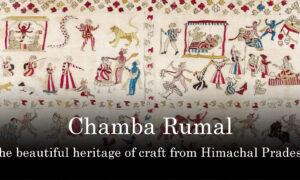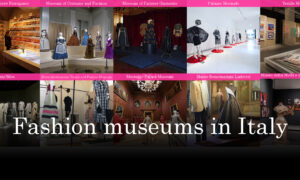Different Types of Designers – Part 2, The Non-Apparel Designer
Introduction
As we have witnessed that in the world of design and in particular fashion design there are many types of professional fashion designers that craft products that are not apparels but yet a very strong part of the fashion industry. Like the ‘apparel designer’ these ’non-apparel designers’ also have a strong discipline in their respective fields. In this series ” Different Types of Designers ” we delve into the multifaceted realm of fashion design to explore the roles, functions, and contributions of various designers. While part 1 was devoted to all kind of designers who designed clothes, part 2will talk about The Textile Designer, The Graphic Designer, The Accessory Designer, The Jewellery Designer, and The Footwear Designer.
As discussed in ‘Different Types of Designers – Part 1’, the common misconception that there are very limited options for career building, was dispelled. Continuing that same discussion, this blog further explores and informs about more career opportunities in the fashion industry, specially those that do not deal with the making of clothes in any way. Once again, we will delve into what these designers do, how they work and what are the opportunities and challenges involved in being these kinds of designers. This information will help expand your own knowledge of the fashion industry and maybe help those who want to make a career in it.
What is design and who are non-apparel fashion designers?
Design is a vast concept. But to simplify, I always understand it as a ‘Creative Solution’ to any problem. But it is not always about clothes. And so, when we talk about fashion design, the problem question ‘what to wear?’ is always accompanied with another question ‘how to style it’ or ‘what accessories to put with it?’. ’. Notice how these questions do not contain the word fashion that is because I have mentioned in my earlier posts that fashion encompasses more than clothes. Thus, all the things that makeup the various components of fashion will have their unique designers. Now let us look at the various non-apparel designers that are there and discuss them in detail.
The Textile Designer
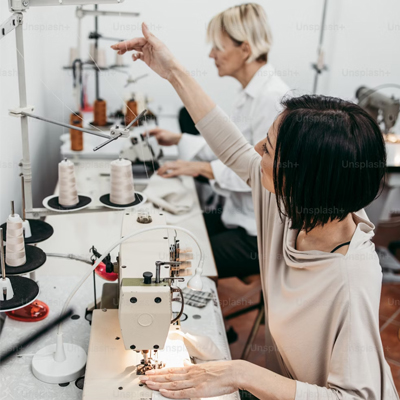
Textile designers are very crucial to the whole structure of fashion design. Because if there are no good textiles, the designs will be difficult to make attractive. These designers are the brain behind the beautiful intricate patterns, textures and fabrics that we see as gorgeous clothing on the runways. They are the first step towards the conceptualisation and creation of an idea into a tangible product.
One of the most celebrated figures in the textile design world is Sarah Burton, the former creative director at Alexander McQueen. Burton’s expertise in textile was one of the reasons for the late McQueen to trust her blindly. Her ability to bring traditional craftsmanship and innovative techniques together to create magical breathtaking pieces makes her a formidable designer.
Mary Katrantzou is another such name who has created a mark in the fashion industry based on her textile designing abilities. Her signature look of bold hues as statement prints and her background in textile designing allows her to experiment with various materials. She is a great example of textile designers making waves in the fashion world.
But providing stunning fabrics is not the only responsibility that a textile designer has. They also shoulder the responsibility of contributing to the sustainability efforts by creating eco-friendly and sustainable fabrics and materials. Designer Stella McCartney often collaborates with textile designers to develop such fabrics that are ethical and sustainable in production methods.
The Graphic Designer

A very new addition to the family of designers is the graphic designer. With the advent of technology and how it has seamlessly blended with our lives, it was only natural to have digital interfaces become part of the fashion industry. And the perfect example of continuing the legacy into the modern world is the graphic designer. The graphic designer is one who is creating things in the digital realm and then using various techniques to put them in the real world.
They play a pivotal role not just in designed graphic artworks but also in shaping brand identities, visual storytelling and creating compelling marketing materials. A lot of this depends on their knowledge of software and ability to keep upgrading their skill set. Not just that, the way now graphic designing is being integrated into traditional dress making is how the future will look like.
A prominent figure in the world of both fashion industry and graphic designing is Sarah Chang. She is the lead graphic designer at Vogue Couture and her responsibilities encompass crucial responsibilities like collaborating, conceptualisation and executing visual elements for print and digital campaigns. From designing eye-catching logos and branding materials to crafting engaging social media graphics, Sarah ensures that Vogue Couture maintains its edge in a competitive market.
And then there are graphic designers like Alex Nguyen, working at a fashion startup called Trendsetters Inc., who is instrumental in designing product packaging, website layouts, and email newsletters. Her expertise lies in bringing the brand’s vision to reality and making stunning visuals to connect and impress the target audience.
The Accessory Designer

One designer the fashion industry depends heavily upon but still tends to ignore it the most, are the accessory designers. They are the unsung heroes that often are responsible for elevating a garment from ordinary to extraordinary. The accessory industry is just as complex as the apparel one, because they often have to keep in mind the clothes and have to stand on their own as well.
A notable professional accessory designer is Maya Patel, the Senior Accessory Designer at Luxe Trends Co. Her role is to start from scratch, conceptualising and sketching designs and simultaneously sourcing and later oversee production of the prototypes and samples. She often has to collaborate with fashion designers to achieve their visions by designing accessories that compliment the collection and also have market appeal.
The responsibility that an accessory designer shoulder goes beyond the aesthetic appeal of the product. They also have to keep in mind the practicality and market appeal in mind. Keeping in touch with current trends, ensures they resonate with consumers and also align with the brand or collection the accessories are meant for. Whether it’s crafting statement jewelry pieces, chic handbags, or trendy footwear, accessory designers play a vital role in shaping the visual narrative of fashion brands.
Another famous name is Luca Rossi, who is working at a luxury fashion house called Elegance & Grace. She is tasked with pushing boundaries and introducing innovative designs that captivate discerning clientele. Luca’s expertise lies in combining traditional craftsmanship with contemporary sensibilities, resulting in timeless yet trendsetting accessories that leave a lasting impression.
The Jewellery Designer
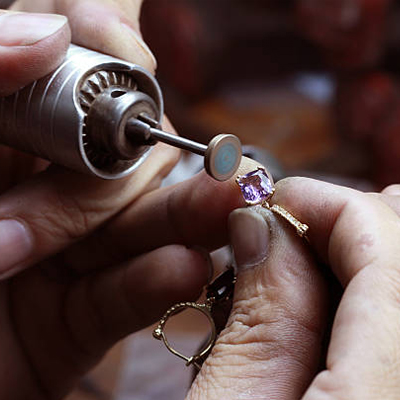
The one designer that rivals the stature of the fashion designer in the global fashion industry, is the jewellery designer. They are positioned as artisans whose craft of making jewellery infuses glamour into every ensemble. One shining example is Sofia Rodriguez, the Head Jewellery Designer at Opulence Gems Ltd. Sofia. She not only conceptualises but also sketches intricate designs.
The process of designing jewellery is similar to fashion designers. They also has to source material which involves having an extensive knowledge base and experience in the relevant field. As with other designers, a jewellery designer also often collaborates with fashion designers to create custom jewellery for the collections. But in this rare instance, sometimes the fashion designer also has to design clothes in order to compliment the jewels someone is wearing.
Every high-end fashion house in the world has their own jewellery design department because the amount of business that they bring in rivals that of the clothes. Also, there is a huge demand of jewellery at every level of the fashion chain. From low quality cheap accessories to high end multi million dollar bejewels. These ae not mere accessories but are like work of wearable arts that serve to elevate any outfit they are paired with.
Furthermore, jewellery designers such as Alessandro Conti, working at a high-end jewellery maison called Luxe Jewels, are tasked with pushing the boundaries of creativity and innovation. Alessandro’s expertise lies in merging traditional craftsmanship with avant-garde techniques, resulting in pieces that captivate discerning clientele worldwide.
The Footwear Designer
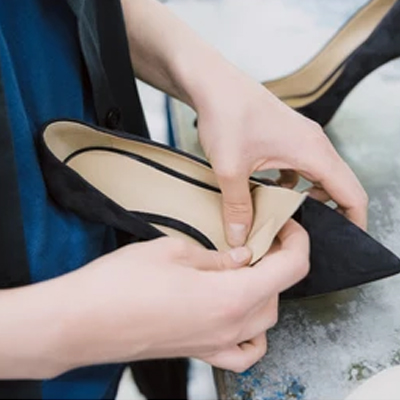
A very powerful business sector of the design industry is the area footwear designing. You might call them the silent architect of style. It has often been said by great designers and stylist that no matter how expensive clothes and jewels one might wear, it always what you put on your feet decides the worth of your ensemble. That’s how important is the role of a footwear designer.
A well-known name and a visionary in modern footwear industry is Emma Chen, the Lead Footwear Designer at Urban Chic Inc. She has raised the creativity level by combining fashion with comfort and practicality. Her responsibility is to create designs that are innovative and statement keeping the trends and market demand in mind.
Responsibilities of footwear designers like Emma extend beyond mere aesthetics; they must also navigate the intricacies of materials, construction techniques, and market demands. Collaborating closely with fashion designers, they ensure that footwear complements and enhances the overall aesthetic of a collection while meeting the needs and desires of consumers.
Two very iconic names without whose mention this part will be incomplete are Jimmy Choo and Christian Louboutin.
Jimmy Choo, founded by Malaysian fashion designer Jimmy Choo and British Vogue editor Tamara Mellon in 1996, quickly became synonymous with luxury and glamour. Renowned for their exquisite craftsmanship and attention to detail, Jimmy Choo shoes are coveted by celebrities and fashion enthusiasts worldwide. The brand’s signature stiletto heels, adorned with intricate embellishments and luxurious materials, have graced red carpets and runways, cementing its status as a symbol of sophistication and elegance.
Christian Louboutin, on the other hand, revolutionized the footwear industry with his distinctive, red-lacquered soles and avant-garde designs. Established in 1991, the eponymous brand has become synonymous with boldness and individuality. Louboutin’s daring creations, from sky-high heels to statement-making boots, exude a sense of confidence and empowerment. His innovative approach to shoe design, combining traditional craftsmanship with contemporary flair, has earned him a cult following among fashion-forward consumers.
The Perfume Designer

A very delicate kind of designing is designing for evoking the olfactory senses, and the perfumer is the one who does that. The perfume designer is a very highly respected position in the world of fashion industry as there are very few people that can create a magic which affects the wearer’s personality in invisible means, by evoking emotions, memories and identities through scents.
A name that is instantly recognisable in the world of perfume making is François Demachy, the exclusive Perfume Designer for Dior Parfums. As the world’s leading perfumer Demachy is responsible for selecting the finest and rarest elements in the world and compose new fragrances. Sometimes he also collaborates with his fashion counterparts in Dior to create specific scents that compliments the clothing collections that are to be unveiled. His job is to make sure that each perfume that comes out of Dior matches the brand’s aesthetics and convey its essence.
Responsibilities of perfume designers like François extend beyond creating pleasant aromas; they must also consider market trends, consumer preferences, and brand image. From crafting signature scents for runway shows to developing commercial fragrances for mass distribution, their work is integral to a fashion house’s overall identity and success.
Similar to Demachy, there is another renowned perfume designers Olivier Polge, the Perfumer-Creator for Chanel. At Chanel he is tasked with pushing the boundaries of olfactory artistry. Olivier’s expertise lies in translating Chanel’s legacy and heritage into modern, innovative fragrances that resonate with a diverse audience.
Conclusion
Now we know that there are more than just the fashion ‘apparel’ designers in the fashion industry. These multi-tasking responsibilities can be shouldered by individuals with talent and skill.
To conclude, the fashion industry is an industry that houses a diverse variety of designers who create more than clothes. With their individual unique visions and creativity, they make the fashion industry a complex giant of creation. From graphic designers who shape brand identities to accessory designers who add the finishing touches, and from footwear designers who marry fashion with functionality to perfume designers who evoke emotions through scent, every designer plays a vital role in shaping the way we express ourselves through fashion.
Names like Sarah Chang, Maya Patel, Emma Chen, and François Demachy represent just a few of the many talented individuals who are pushing boundaries and setting trends in their respective fields. Whether it’s crafting intricate graphics, designing statement accessories, creating stylish footwear, or blending captivating fragrances, these designers leave an indelible mark on the fashion landscape.
Ultimately, the collaboration and innovation fostered by designers across disciplines are what drive the industry forward, continually challenging norms and inspiring us to explore new realms of self-expression. As we celebrate the contributions of these designers, let us also recognize the transformative power of fashion to elevate, empower, and unite us all.










